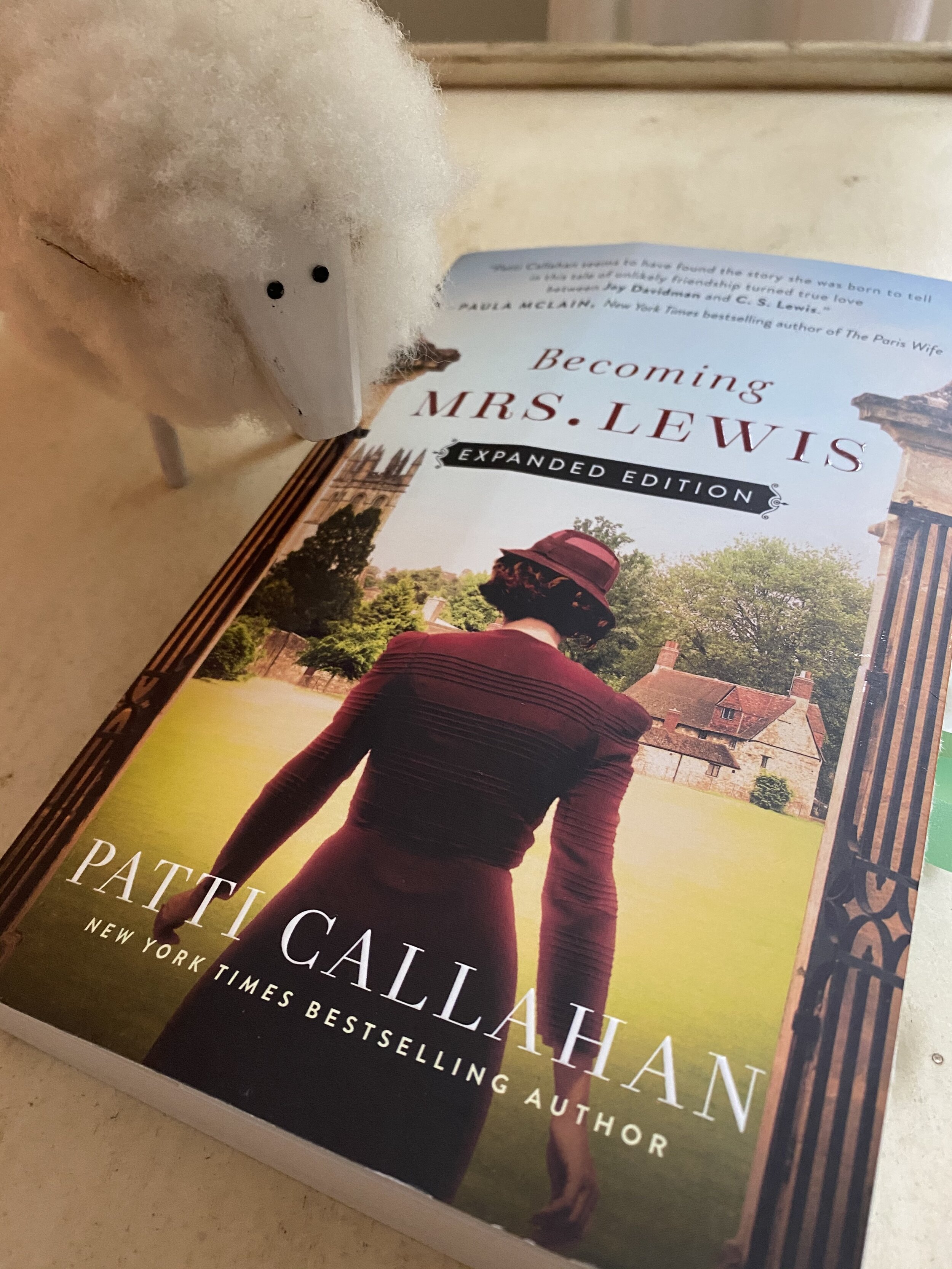Becoming Mrs. Lewis
Life is full, and reading is an individual pursuit that takes time. When I use valuable hours to read, I want to choose wisely. I look for stories that are well-written, thought-provoking, entertaining, and, ultimately, hopeful. Frankly, if a book doesn't grab me by the end of the first chapter, I usually won't finish it.
Becoming Mrs. Lewis hooked me on the first page, as author Patti Callahan smoothly and succinctly began by sharing what I already knew: the two main characters end up together. But although the marriage of C.S. Lewis and Joy Davidman is a historical fact, and not a secret, Callahan set it up in an intriguing way, sharing the “what” without giving away the “how.” My curiosity about exactly how their relationship transpired didn’t wane throughout the whole story. Although their path to togetherness was not completely clear until the end, Callahan never dropped the ball – she continued to not only hold my interest, but also to relax me as a reader with her lyrical writing style. Reaching the story's conclusion didn't feel like a race, but like a real-life journey that I didn't want to end.
Having been fascinated by C.S Lewis, I was intrigued by the story of his wife, Joy Davidman. I was curious to learn how their relationship began and evolved since they lived on two different continents, and she was married when they first started corresponding. The story was almost too complex and unusual to be true, but the author based it on extensive research and factual information.
I have been known to breeze over long descriptions if they begin to bore me, but Callahan set scenes so well that I found myself re-reading them at times. I felt transported to another time and place, which was particularly enjoyable during the COVID lockdown, when mental transport was the only travel possible.
Callahan handled the humanity and faith walk of the characters well – particularly Joy’s. It was refreshing to see the subtle way the author allowed Joy's rationalizations, manipulations, strengths, and struggles to show through her thoughts and actions. Like all humans, Joy probably didn't fully recognize the strengths and weaknesses in herself as she lived out roles as wife, mother, daughter, and friend. Callahan's approach made Joy extremely relatable, as her path to emotional healing and spiritual maturity unfolded.
The book captured what spiritual growth looks like in reality, as it wove together Joy’s gradual understanding of her own issues, and acceptance of a love that was even deeper than what she so desperately sought in the human realm. Joy’s faith journey felt authentic throughout.
The way the author also blended in Lewis's work and thought processes, as he developed his famous, theologically deep fiction and non-fiction, often through conversations and correspondence with Joy, bordered on genius. As a writer, I found these aspects of the book particularly interesting.
Becoming Mrs. Lewis is an example of lovely story-telling, as smooth as butter. Fans of romance, literature, or history will find it a restful way to take a break from the stresses of the modern world. Once I finished the book, I found myself more interested than ever in reading the works of C.S. Lewis, and am now enjoying Mere Christianity with a fresh lens into his brilliant mind.

